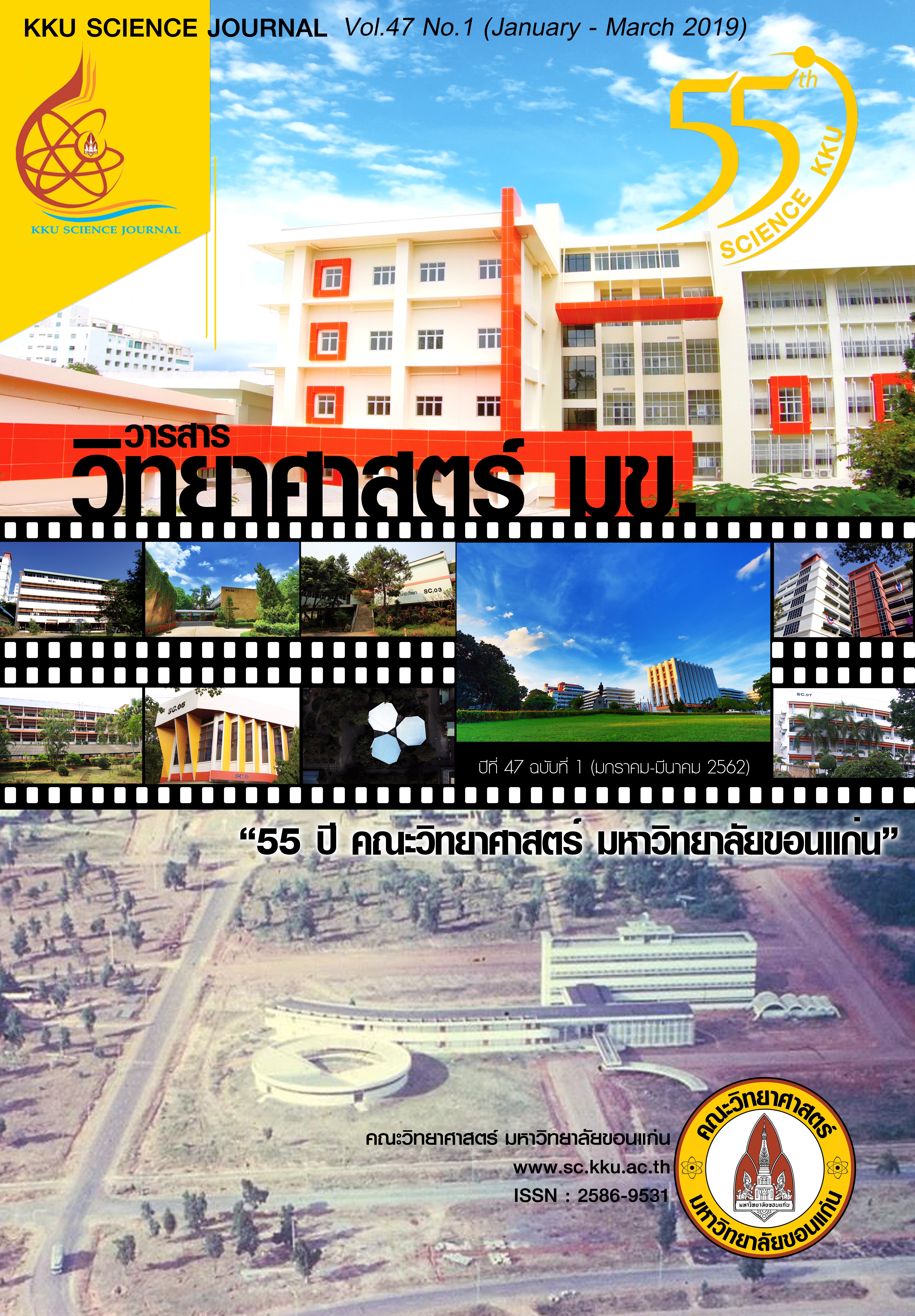Antioxidant Activities and Total Phenolic Contents from Thai Wild Fruits
Main Article Content
Abstract
The objective of this research was to study the total phenolic contents and the antioxidant activities of selected ten Thai wild fruits including Flacourtia indica, Micromelum minutum, Antidesma ghaesembilla, Vitex glabrata, Catunaregam tomentosa, Strychnos nuxblanda, Diosyios rhodcalyx, Spondias pinnata, Tiliacora triandra and Schleichera oleosa. All samples were extracted with dichloromethane, ethyl acetate and methanol. The total phenolic contents using the Folin-Ciocalteu reagent and the antioxidant activities using the 2,2-diphenyl-1-picrylhydrazyl (DPPH) radical scavenging activity, reducing power and iron (II) chelation of all extracts were evaluated. The total phenolic contents of the ethyl acetate extract of F. indica possessed the highest quantity of total phenolic compounds as 915.63+4.66 mg GAE/g extract. Moreover, the ethyl acetate extract of F. indica showed the strongest DPPH inhibition with the IC50 of 3.94+0.01 µg/mL. In addition, the ethyl acetate extract of F. indica exhibited strong ferric reducing power and ferrous chelation activity with the value of 375.14+8.39 mmol/g extract and 124.51+1.07 mmol/g extract, respectively. The methanolic extract of S. pinata indicated very strong DPPH inhibition with the IC50 of 3.97+0.06 µg/mL. Furthermore, the methanolic extract of S. pinata showed strong reducing power and ferrous chelation activity with the values of 366.02+12.27 mmol/g extract and 105.70+1.21 mmol/g extract, respectively. Therefore, these fruits can be further used as sources of antioxidants for food and pharmacological application.
Article Details

This work is licensed under a Creative Commons Attribution-NonCommercial-NoDerivatives 4.0 International License.


